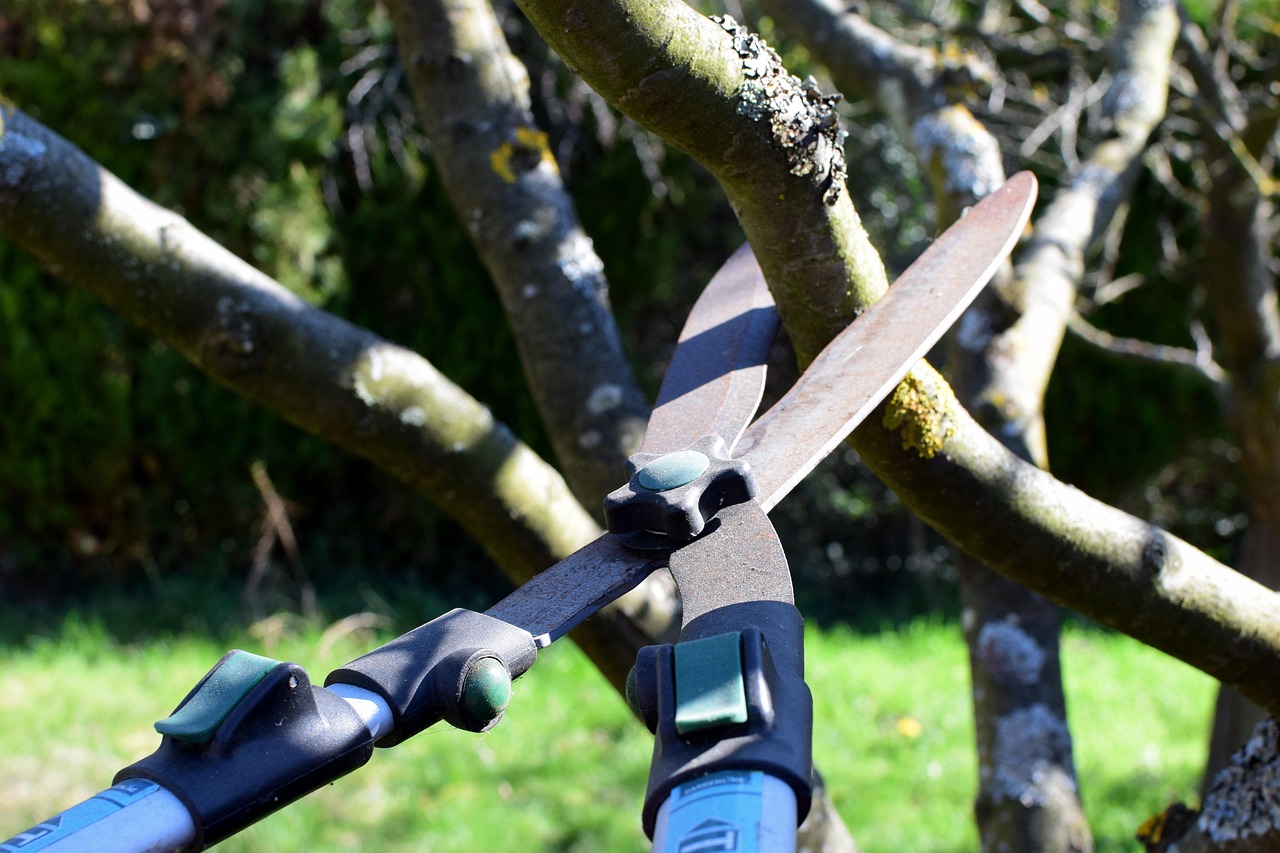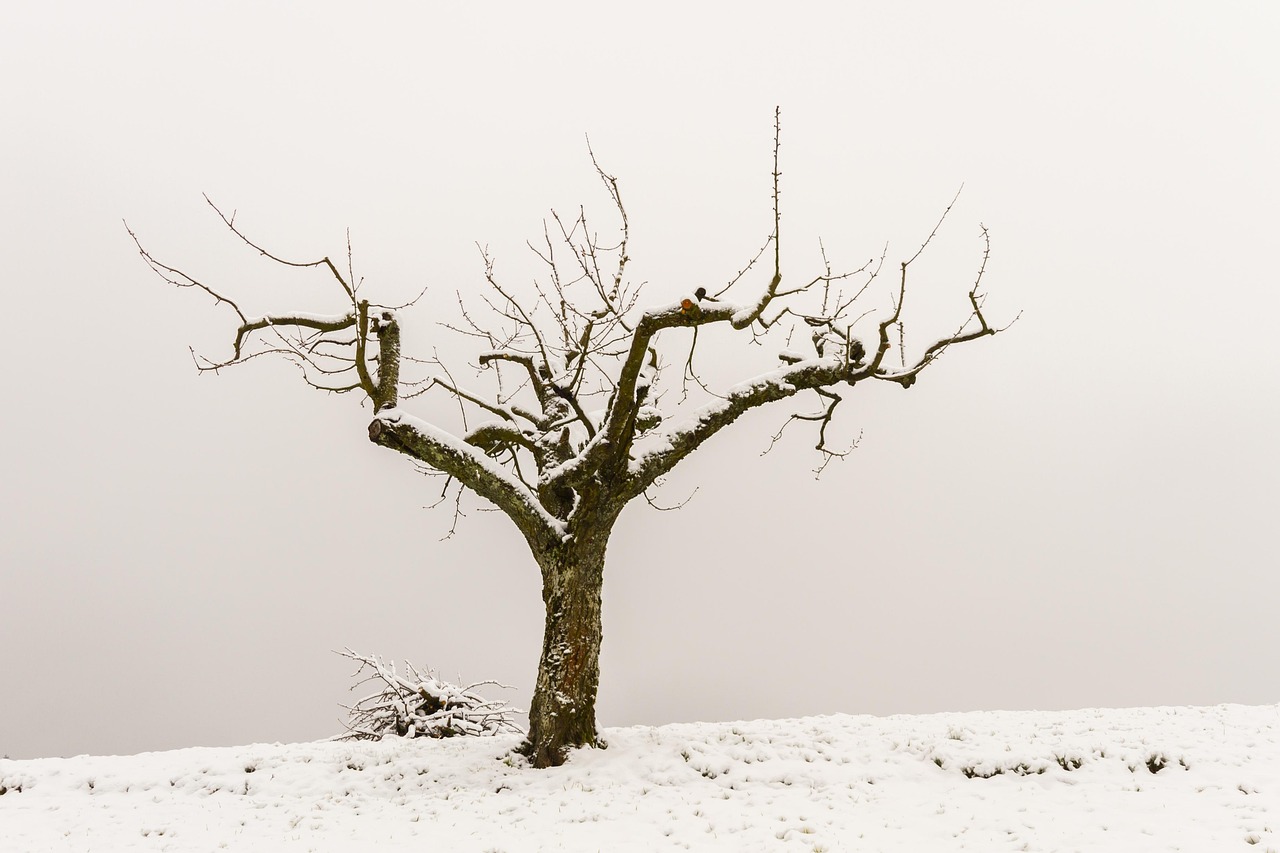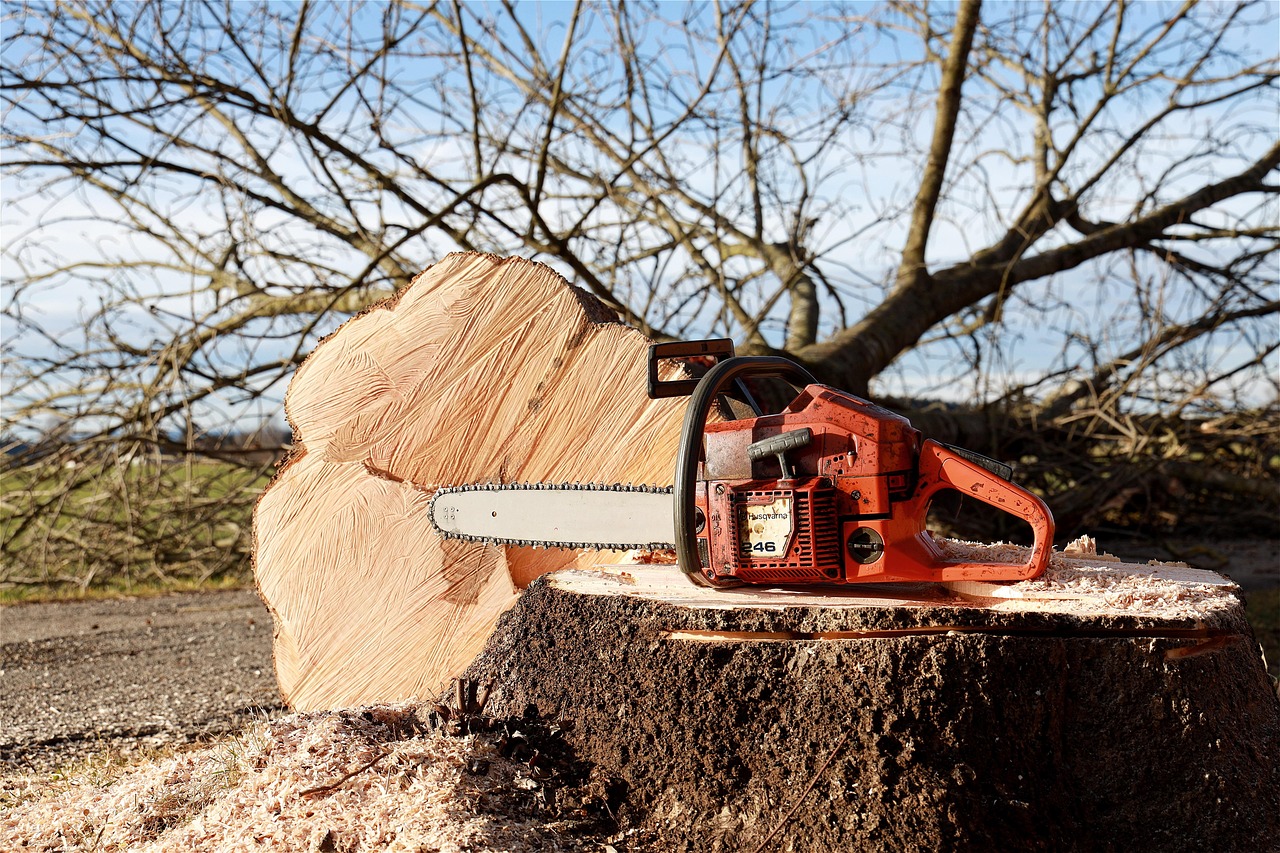Call a professional for tree pruning when the tree is too large, poses safety risks, requires specialized techniques, or is showing signs of disease. Professionals have the skills and equipment needed to ensure the job is done safely and effectively.
Tree pruning is an essential part of tree maintenance. It helps trees grow healthy and strong while maintaining their aesthetic appeal. However, not all pruning tasks are suitable for homeowners to undertake themselves. Understanding when to call a professional is crucial for both the health of your trees and the safety of your property.

Many factors can influence the decision to hire a professional. These include the size of the tree, its location, and the specific pruning needs. Homeowners should be aware of their own limitations in terms of knowledge and equipment. In some cases, improper pruning can lead to long-term damage to the tree or even create unsafe conditions around the property.
Understanding Tree Pruning
Tree pruning involves the selective removal of certain parts of a tree. This can include branches, buds, or roots. The primary goals of pruning are to:
- Enhance tree health by removing dead or diseased branches
- Improve air circulation and sunlight penetration within the tree’s canopy
- Control tree shape and size for better aesthetics
- Ensure safety by eliminating branches that pose risks to structures or people
The timing and technique of pruning are critical. Different trees require different approaches, and knowing how to prune correctly can be challenging without experience. This is where professional arborists come into play.

Signs You Need Professional Help
There are several indicators that you should consider calling a professional for tree pruning. Recognizing these signs early can prevent further damage or hazardous situations:
- Tree Size: If your tree is taller than 15 feet or has large branches that are difficult to reach, it is best to hire a professional.
- Safety Concerns: If branches are close to power lines or structures, a certified arborist should handle the pruning to avoid accidents.
- Unfamiliarity with Techniques: If you are unsure about proper pruning methods, professionals have the expertise to ensure the tree remains healthy.
- Visible Damage: Trees that show signs of disease or damage require specialized care that professionals can provide.
- Multiple Trees: If you have several trees that need attention at once, hiring a team can save time and ensure uniform care.
Benefits of Hiring Professionals
There are numerous advantages to hiring a professional for tree pruning. These include:
- Expertise: Arborists possess extensive knowledge about tree biology and proper care techniques.
- Safety: Professionals have the right tools and training to safely prune large trees without risking injury.
- Health Benefits: Proper pruning by a professional can significantly enhance a tree’s health and longevity.
- Time-Saving: Hiring professionals can save homeowners hours of work, allowing them to focus on other tasks.
The cost of hiring a professional may vary based on factors such as tree size, location, and complexity of the job. However, investing in professional services can lead to healthier trees and fewer problems down the road.

Choosing the Right Professional
Selecting a qualified arborist is crucial to ensure effective and safe pruning. Here are some tips for choosing the right professional:
- Check Credentials: Look for certified arborists who have completed training programs recognized by organizations like the International Society of Arboriculture (ISA).
- Read Reviews: Research customer feedback online to gauge the reputation of the service provider.
- Ask for Estimates: Obtain multiple quotes to compare services and prices before making your decision.
- Inquire About Insurance: Ensure that the company has liability insurance to protect you in case of accidents during the job.
By taking these steps, homeowners can find qualified professionals who will provide quality tree pruning services. Understanding when to call a pro can make all the difference in maintaining healthy trees and a safe environment around your property.
Pruning is not just about aesthetics; it plays a vital role in tree health and safety. Knowing when to seek help from skilled professionals ensures that your trees thrive for years to come.

Understanding Different Pruning Techniques
Tree pruning is not a one-size-fits-all task. There are several techniques that professionals use, each tailored to specific goals and tree types. Knowing these techniques can help homeowners understand the work that professionals do and why it is essential for their trees’ health.
Common Pruning Techniques
Here are some of the most common pruning techniques used by arborists:
- Crown Thinning: This technique involves selectively removing branches to improve light penetration and air circulation within the canopy. It helps reduce weight on heavy branches and maintains the tree’s natural shape.
- Crown Raising: This technique removes the lower branches of a tree to provide clearance for pedestrians, vehicles, or structures. It is often used for street trees.
- Crown Reduction: This method reduces the overall size of a tree by shortening branches. It is particularly useful for large trees that need to be kept away from power lines or structures.
- Deadwooding: This process involves removing dead or diseased branches from a tree. This not only improves appearance but also prevents the spread of disease and reduces hazards.
- Structural Pruning: This technique focuses on developing strong branch structure in young trees. It involves selectively removing branches to establish a strong framework that can support future growth.
Seasonal Considerations for Pruning
The timing of tree pruning can significantly impact the health and growth of the tree. Different species may have preferred pruning seasons. Here are some general guidelines:
| Season | Best Practices |
|---|---|
| Winter (Dormant Season) | This is often the best time for pruning most trees. The lack of leaves makes it easier to see the structure, and the trees are less stressed. |
| Spring | Prune during this time only if necessary, such as to remove dead branches. Avoid heavy pruning as trees start to leaf out. |
| Summer | Light pruning is acceptable, particularly for shaping or removing unwanted growth. Avoid major cuts during this season due to potential stress on the tree. |
| Fall | Avoid pruning in late summer to fall, as trees are preparing for dormancy. This can lead to stress and increased susceptibility to disease. |
Potential Risks of DIY Pruning
While some homeowners may feel confident in their ability to prune their trees, there are significant risks associated with DIY pruning. Understanding these risks can help emphasize the importance of hiring professionals.
- Improper Techniques: Lack of knowledge about proper pruning techniques can lead to damage. Incorrect cuts can harm the tree’s structure and health.
- Safety Hazards: Climbing ladders or using chainsaws without experience can lead to severe injuries. Professionals are equipped with safety gear and training to handle such tools safely.
- Pest Infestation: Poor pruning practices can create wounds that attract pests and diseases, compromising tree health.
- Legal Issues: If a tree is located near property lines or public areas, improper pruning can lead to disputes or fines if local regulations are violated.
Identifying Tree Species for Effective Pruning
Different tree species have unique characteristics that influence how they should be pruned. A professional arborist can identify these species and apply the right techniques accordingly. Here are some common types of trees and their pruning needs:
- Deciduous Trees: These trees shed leaves annually. They usually benefit from winter pruning when they are dormant.
- Evergreen Trees: These trees retain their leaves year-round. Pruning should be done cautiously to avoid affecting their shape.
- Fruit Trees: These require specific pruning techniques to promote healthy fruit production. Timing is crucial, as different varieties have different optimal pruning times.
- Flowering Trees: Depending on whether they bloom on old or new wood, flowering trees may need different approaches at various times of the year.
The knowledge of tree species not only helps in determining when and how to prune but also enhances the overall health and beauty of the landscape.
The Role of Technology in Tree Pruning
Advancements in technology have significantly improved tree care practices, including pruning. Modern tools and equipment enable arborists to perform tasks more efficiently and safely.
- Drones: Drones can be used for aerial assessments, allowing arborists to inspect large areas for tree health without having to climb every tree.
- Saw Technology: Electric and battery-operated saws reduce effort and improve precision in cutting branches.
- Software Tools: Tree management software can help track pruning schedules, monitor tree health, and manage maintenance records effectively.
The integration of technology not only enhances efficiency but also ensures that trees receive the best possible care.
Understanding the Costs of Professional Tree Pruning
When considering professional tree pruning, homeowners often wonder about the costs involved. Understanding these costs can help in budgeting and determining whether to hire a professional or attempt DIY pruning.
Factors Influencing Cost
Several factors influence the overall cost of tree pruning services. Here are some key considerations:
- Tree Size: Larger trees generally require more time and effort to prune, leading to higher costs. The height and width of the tree play a significant role in pricing.
- Tree Species: Certain species may require specialized techniques or more careful handling, which can affect pricing.
- Location: The tree’s location can impact accessibility. Trees in hard-to-reach places or near structures may incur additional fees.
- Health Condition: Trees that are diseased or damaged may require more extensive work, raising the overall cost.
- Season: Pruning during peak seasons may come at a premium. Some companies may charge more during busy times.
Typical Pricing Structures
Pricing for tree pruning can vary widely based on the above factors. Here are some common structures to expect:
| Service Type | Estimated Cost |
|---|---|
| Small Tree (up to 15 feet) | $75 – $250 |
| Medium Tree (15-30 feet) | $150 – $500 |
| Large Tree (30+ feet) | $300 – $1,000+ |
| Tree Removal (if needed) | $200 – $2,000+ |
These estimates can vary based on geographic location and the specific service provider. It is advisable to get multiple quotes before making a decision.
Maintaining Trees Between Professional Pruning
While professional pruning is essential for maintaining tree health, homeowners can also contribute to their trees’ well-being between professional visits. These maintenance efforts can help ensure that trees remain healthy and vibrant.
Regular Inspections
Conducting regular inspections can help identify potential issues before they become significant problems. Homeowners should look for:
- Signs of Disease: Yellowing leaves, unusual growths, or early leaf drop can indicate health issues.
- Pest Infestation: Look for signs of pests, such as holes in leaves or visible insects on the bark.
- Structural Problems: Check for any leaning or broken branches that may pose safety hazards.
Watering and Fertilization
Adequate watering and fertilization are vital for tree health. Here are some tips:
- Watering: Trees need consistent moisture, especially during dry spells. Deep watering encourages strong root development.
- Fertilization: Use a slow-release fertilizer formulated for trees to promote healthy growth. Timing is crucial—spring and fall are typically the best times.
Avoiding Damage
Preventing damage to the tree is just as important as caring for it. Homeowners should take precautions such as:
- Avoiding Lawn Equipment: Keep mowers and trimmers away from the base of trees to prevent bark damage.
- Monitoring Soil Quality: Ensure the soil around trees is well-drained and nutrient-rich to support healthy growth.
- Protecting Roots: Be cautious when digging near tree roots to avoid severing them.
The Importance of Tree Health Assessment
A comprehensive tree health assessment is crucial for determining the need for pruning and other care methods. Professionals often conduct these assessments during their visits, but homeowners can benefit from understanding the key components involved.
Indicators of Tree Health
A tree’s overall health can be assessed based on several indicators:
- Bark Condition: Healthy trees should have intact bark. Cracks, peeling, or discoloration may indicate underlying issues.
- Leaf Appearance: Leaves should be vibrant and free from spots or discoloration. Yellowing or browning leaves can signal stress.
- Crown Density: A full crown with abundant foliage typically indicates a healthy tree. Sparse foliage may suggest issues.
The Role of an Arborist in Assessments
An arborist is trained to evaluate tree health comprehensively. They consider factors such as:
- Pest and Disease Identification: Identifying potential threats to tree health that may require specialized treatment.
- Structural Integrity: Evaluating whether a tree’s structure poses any risks due to weak branches or leaning.
- Growth Patterns: Observing growth patterns to determine if a tree is thriving or struggling due to environmental factors.
A thorough assessment allows homeowners to make informed decisions about pruning and other tree care needs, ensuring that their trees remain healthy and safe over time.
Understanding Tree Pruning Regulations
Before undertaking any tree pruning, it is essential to be aware of local regulations and guidelines. Many municipalities have specific rules regarding tree maintenance, especially in urban areas. Knowing these regulations can help avoid fines or legal issues.
Common Regulations to Consider
Here are some common regulations that homeowners should be aware of when it comes to tree pruning:
- Permits: In some areas, permits may be required before pruning certain types of trees, particularly if they are protected species or located in public spaces.
- Property Lines: Homeowners should ensure they are pruning their own trees and not those that border neighboring properties without consent.
- Protected Species: Many municipalities have laws protecting specific tree species. Improper pruning of these trees can lead to heavy fines.
- Wildlife Considerations: Certain times of the year may be restricted for pruning to protect nesting birds or other wildlife.
Consulting with local authorities or a professional arborist can provide clarity on these regulations and help homeowners stay compliant while caring for their trees.
Benefits of Regular Tree Care
Investing in regular tree care, including professional pruning, brings a host of benefits. Understanding these advantages can motivate homeowners to prioritize tree maintenance.
Improved Aesthetic Appeal
Well-maintained trees enhance the beauty of landscapes, adding value to properties. Regular pruning ensures that trees maintain their shape and health, contributing positively to curb appeal.
Increased Property Value
A landscape filled with healthy, well-pruned trees can significantly increase property values. Prospective buyers often view well-maintained trees as an asset, making the property more attractive.
Reduction of Hazards
Regular pruning reduces the risk of falling branches and other hazards. This proactive approach minimizes potential damage to structures and ensures the safety of people around the property.
Enhanced Tree Health
Frequent assessments and pruning help identify and address issues early. This leads to healthier trees that are less susceptible to diseases and pests.
Final Thoughts
Tree pruning is a crucial aspect of maintaining healthy and beautiful landscapes. Knowing when to call a professional is essential for ensuring the safety and well-being of both the trees and the surrounding environment. Factors such as tree size, location, and health condition play a significant role in deciding whether to undertake pruning yourself or hire an expert. Understanding different pruning techniques, recognizing the risks of DIY efforts, and being aware of local regulations will empower homeowners in their tree care journey.
The integration of technology in tree care and the importance of regular assessments further highlight how modern practices can enhance traditional methods. By investing time in proper maintenance and seeking professional help when necessary, homeowners can ensure that their trees thrive for years to come.
Ultimately, cultivating a strong relationship with a certified arborist not only benefits individual trees but also contributes positively to the overall health of the urban forest. This collaborative approach can lead to safer, more sustainable, and vibrant communities.
